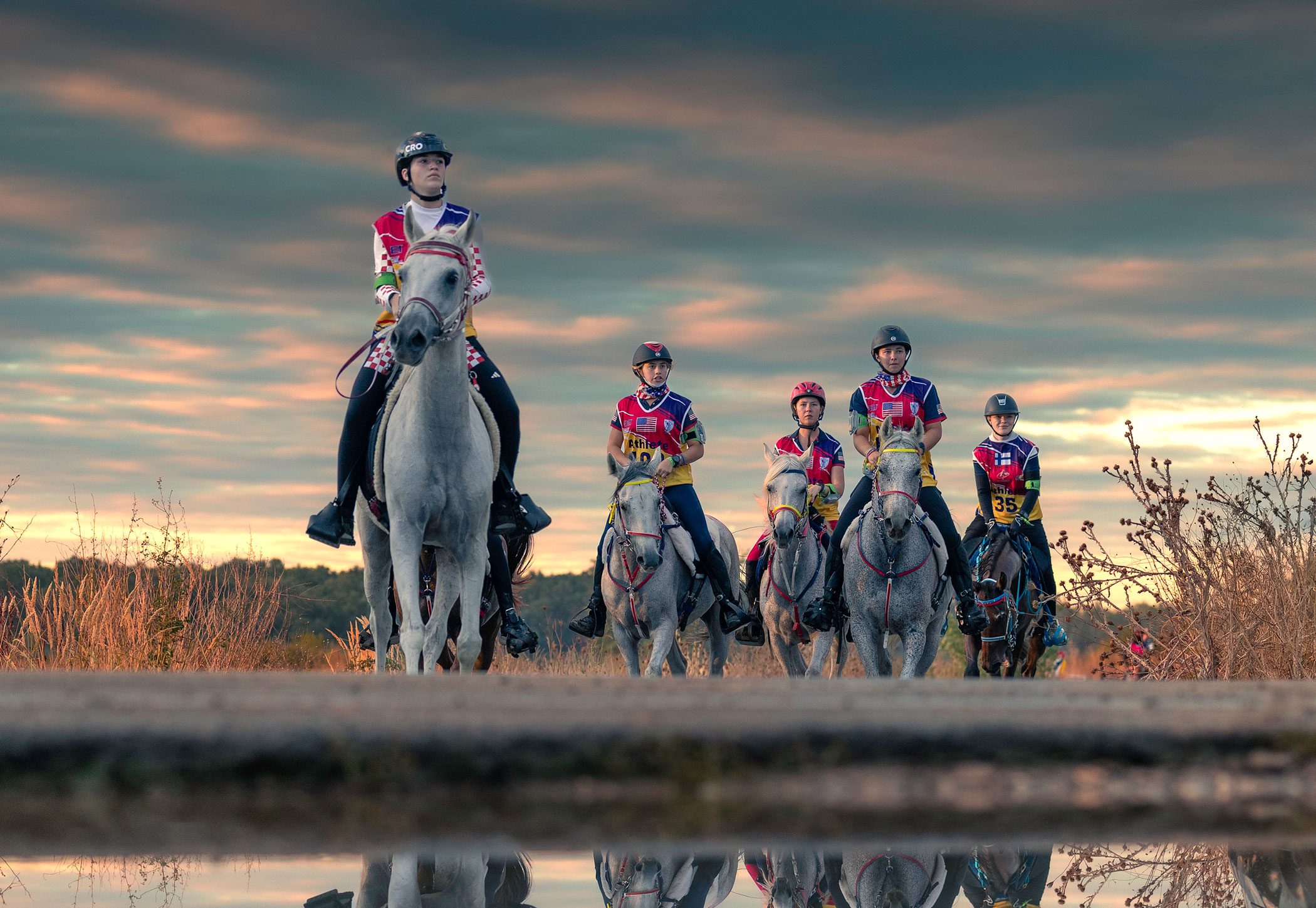
The “desert style” technique employs a simplified, “minimalist” saddle—much lighter than standard endurance saddles—and longer stirrups,
Photo: Wikimedia Commons
By Christa Lesté-Lasserre
Jun 21, 2014
An old style of riding could bring new benefits to modern-day endurance racing. Endurance could head back to its roots and see its riders adopting the “desert style” riding technique which, one research team says, leads to better horse-rider harmonization and faster galloping.
“Confirming our hypothesis, the 'desert style' riding technique in our study provided for a considerable increase in the percentage and quality of riding in the seated canter, which translated into a net gain in speed,” said Sylvain Viry, PhD in equine biomechanics at the Institute of the Science of Movement of the University of Marseilles, in France. Viry presented the results of his preliminary study at the 2014 French Equine Research Day held March 18 in Paris.
“The proportion of the seated canter (greater than 80%) in the desert style technique was four times higher than values previously reported for horse-rider couples of the same level using traditional endurance riding techniques in similar racing conditions,” he said.
As European endurance circuits begin to include more high-speed work, riders have been seeking ways to enable their horses to gallop for longer periods, Viry said.
The “desert style” technique (also known as the “Harley Davidson” riding style, Viry said) employs a simplified, “minimalist” saddle—much lighter than standard endurance saddles—and longer stirrups, Viry said. The rider’s feet are placed more forward than in standard endurance equitation, the rider’s upper body is set farther back, and his or her pelvis takes on a high degree of mobility. It leads to a riding seat that is very similar to that used in desert competitions in the Middle East.
In their study, Viry and colleagues compared the dynamics of a single horse and rider combination being ridden in both the “traditional” and “desert” techniques during different phases of a 130-kilometer (80-mile) race. The team found that vertical movements between the horse and rider were significantly more aligned when the horse was ridden desert style, Viry said, and the horse spent considerably more time (81% vs. 51% of the time) in gallop compared to when he was ridden in a traditional style. The horse's overall speed also increased by 5.6% in desert-style tack, meaning the time it took the pair to complete the race was reduced.
“These results appear to indicate that this riding style is more efficient than traditional endurance riding styles,” Viry said.
But don't head to the tack store just yet: Further research on a larger group of horses and riders is needed before the researchers can make definite recommendations, Viry said. Future studies will also aim to address health and welfare effects of the desert style riding technique, he added.
[More ...]


